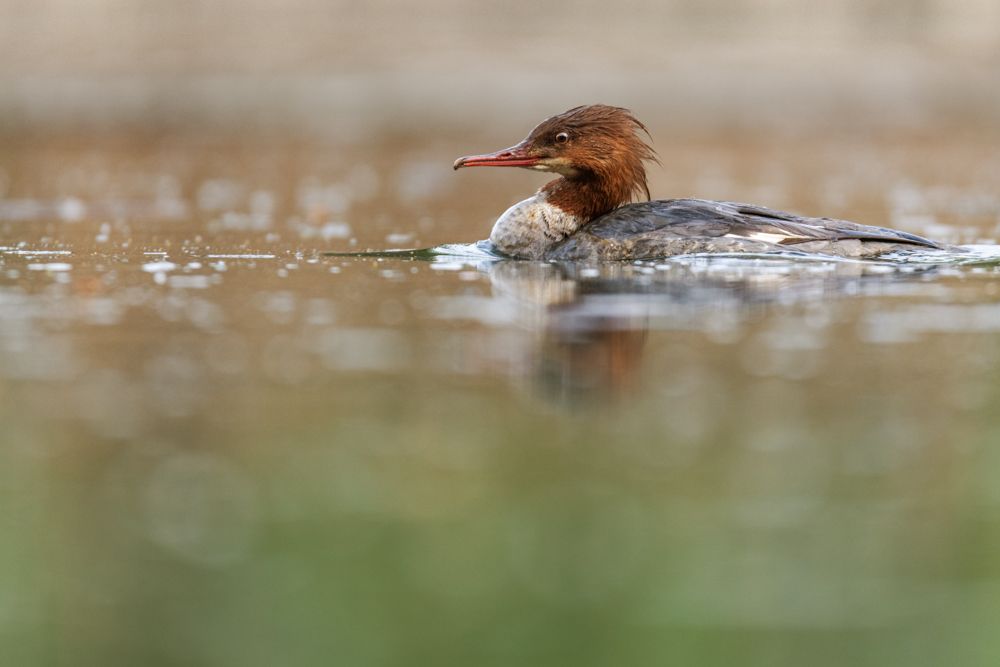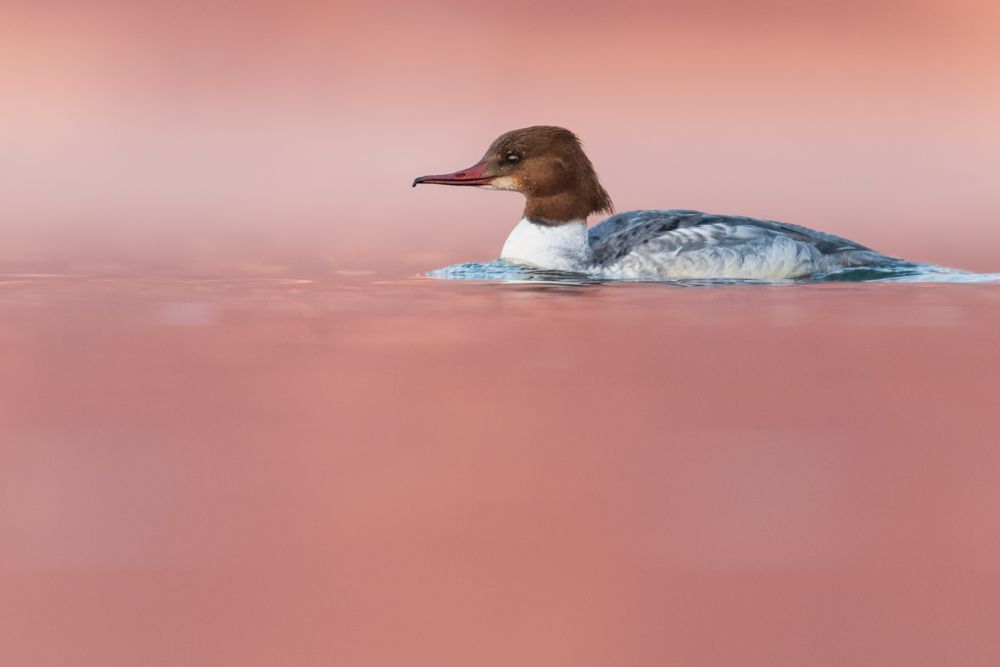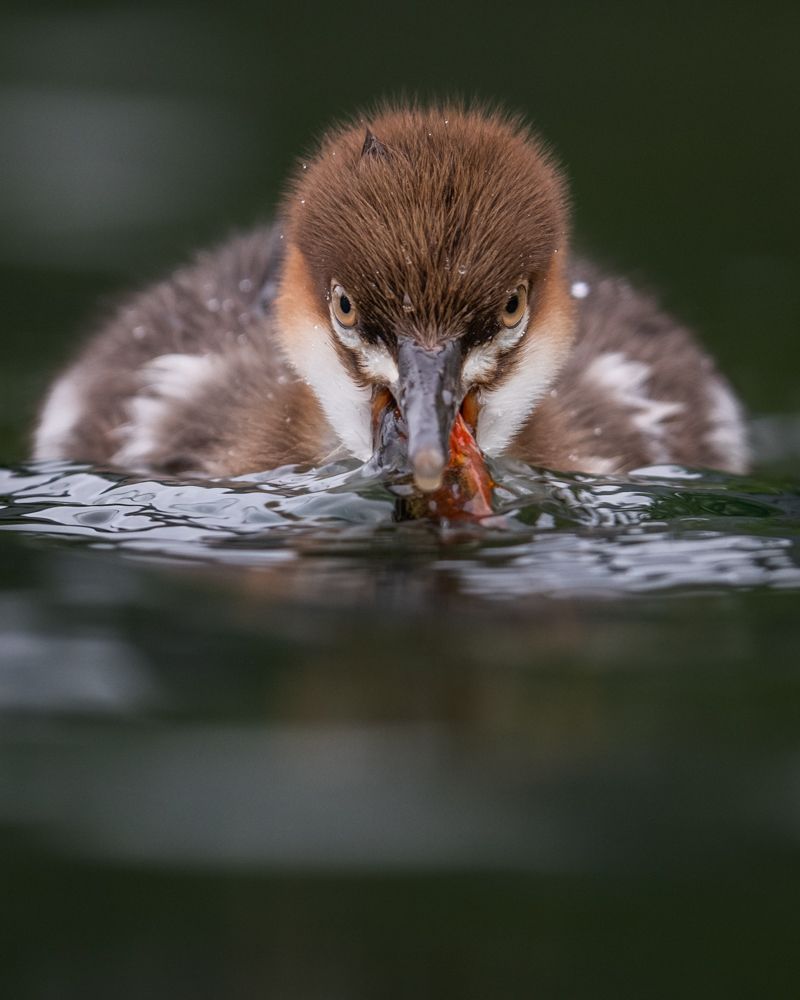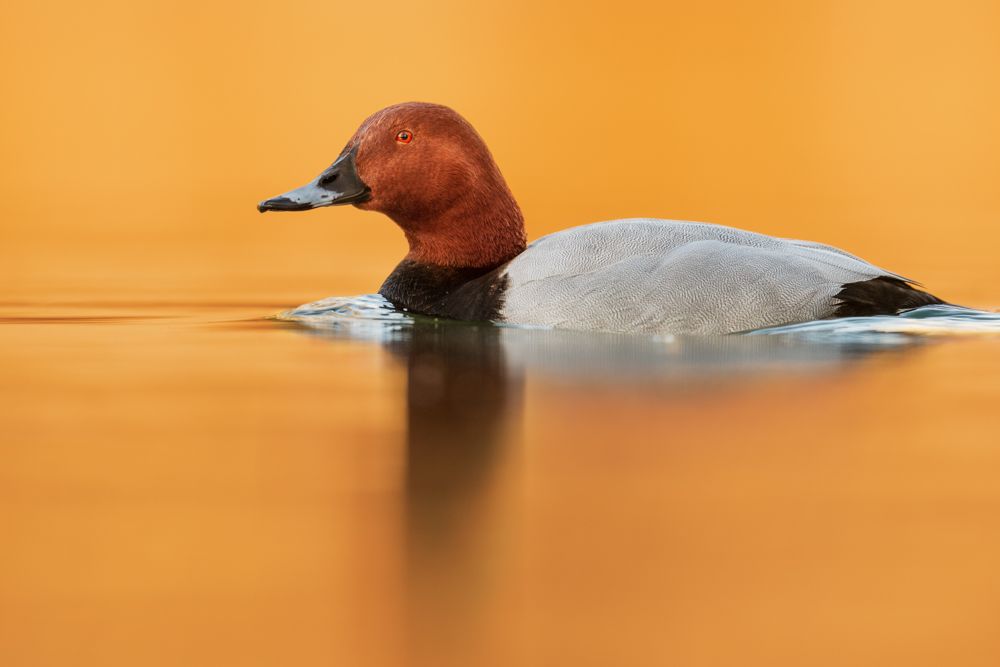Gänsesäger (Mergus merganser)
Profile
Scientific name: Mergus merganser
Class: Birds
Order: Anseriformes
Family: Anatidae
Length: 58-66 cm
span width: 82-97 cm
Weight: 1000-1700 g
Distribution: Palaearctic
Breeding population CH: 600-800 pairs
Habitat: Various lakes, watercourses
Migration behaviour: resident birds and short-distance migrants
Appearance
Because of its pointy beak, the common merganser does not resemble a duck very much. The beak is typical for the merganser genus. The beak is perfectly adapted to their food. The teeth like rows of lamellae help the common merganser to hold on to the caught fish.
The males have a black and white plumage and a dark red beak. Head and coat are black. The head can shimmer a light greenish colour depending on the light. Chest and flanks are white to slightly salmon coloured. The tail feathers are slightly grey.
The female has a grey body and a brown head. At the back of the head the female has a mop of feathers. Females also have a white throat patch. Neck and breast are slightly lighter than the rest of the body and the female has a red beak too.
When in summer the common merganser males molt into their plain dress, the sexes are very difficult to distinguish. Only a large white field on the wings reveals the males. Otherwise the males look the same as the females, which look the same all year round.
Risk of confusion
Common merganser show many unique characteristics and can therefore usually be determined with certainty. Only the red-breasted merganser can sometimes cause problems. While the common merganser male shows many unique characteristics, common merganser and common merganser females are quite similar. However, the female red-breasted merganser has a much less pronounced mop of feathers and the white neck is, if at all, only hinted at. In addition the white throat spot is missing. Another characteristic of the red-throated merganser is the red eyes, which can be seen in both males and females. The common merganser's female, however, has brown eyes.
Where does the common merganser live?
The common merganser is found throughout the Palaearctic. Because the populations of North America, Europe and Asia are separated, these populations have developed differently. Today, each of the three populations is assigned to a single subspecies. There are also genetically separated populations in the individual breeding areas. For example, the individuals that breed in Switzerland are genetically different from Scandinavian individuals.
Common merganser breed in different standing to quite fast flowing, clear and fish rich waters. They also prefer deeper waters. Especially in winter, they form larger groups behind hydroelectric power stations and river dams. There they wait at the fish ladders for migrating fish. In summer I have observed common merganser families at fish ladders too.
Occurrence in Switzerland
With 600-800 brood-pairs, the common merganser is a quite frequent breeding bird of Switzerland. In recent years it has increased both as a breeding bird and as a winter visitor. The winter population is about 5'500 individuals large. In Switzerland, the common merganser can be seen all year round on all major waters and rivers.
What does the common merganser eat?
With 600-800 brood-pairs, the common merganser is a quite frequent breeding bird of Switzerland. In recent years it has increased both as a breeding bird and as a winter visitor. The winter population is about 5'500 individuals large. In Switzerland, the common merganser can be seen all year round on all major waters and rivers.
Breeding behaviour
The common merganser female lays between 7 and 14 eggs in a nest in tree hollows or rock niches. Occasionally common merganser also breed in buildings. The males leave the females already during the process of laying eggs and join flocks. These flocks move to larger lakes or to the sea coast.
After a little more than a month the common merganser chicks hatch. They leave the nest soon after as nest escapees. Still without the ability to fly, the little ones jump out of the up to 20 m high breeding caves. But the young survive the impact without any problems. Under the guidance of the female they are led to the next body of water. The young now already hunt for small fish themselves. With an age of approximately 2 months the young reach the flight ability.
Migration behaviour
Common merganser are both short-distance migrants and resident birds. Especially the breeding birds of the more northern latitudes migrate further south in winter. Breeding birds in regions with a warm winter climate do not have to migrate south. As long as the waters do not freeze, the birds can get their food and therefore do not have to move.
Photographing the common merganser
Due to their contrasting plumage, common merganser males are quite prone to being over- or under-exposed. Only in very soft light it is possible to preserve the details in both the dark and light plumage areas.
Otherwise, common merganser are relatively easy to photograph waterfowl. Especially in the vicinity of settlements common merganser are not very shy and often even come up to you. In a front blog article I explain everything you need to know to take impressive photos of the common merganser.
Resources
The population figures, length, weight and wingspan correspond to the data of the Vogelwarte Sempach
Information on behaviour, distribution etc. is based on my own observations and was supplemented with information from the following sources:
The Birds of Switzerland (2007) Lionel Maumary et al.
Swiss Breeding Bird Atlas 2013-2016
The Cosmos Bird Guide (2017) Lars Svensson et al.




























